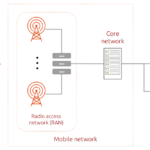Communication in the telecommunications sector heavily relies on the central network, a crucial element facilitating data transfer and connectivity. With technological advancements and a surge in data usage, central networks present significant hurdles for telecommunication companies. Challenges include ensuring swift data transmission, upholding network dependability, and fortifying communication security. The advent of technologies like 5G introduces additional complexities, necessitating substantial infrastructure modifications. This discourse delves into the primary industry challenges and explores how diverse central network designs can address these issues effectively.
Essential requirements of the central network
The central network serves as the foundation of any telecommunication system, ensuring seamless and effective data and signal transmission. To operate optimally, a central network must meet various critical requirements that cater to existing and future needs.
First and foremost is reliability, a fundamental prerequisite for the central network’s operation — consistent and uninterrupted service is non-negotiable. This entails robust fault-tolerance mechanisms, redundancy, and fail-over capabilities to sustain network functionality in the face of hardware or software failures. High reliability is vital for preserving user confidence and meeting service level agreements (SLAs).
Security stands as another indispensable factor. As cyber threats grow in sophistication, the central network must incorporate advanced security measures to safeguard sensitive data and thwart unauthorized access. This includes encryption, intrusion detection systems, and routine security audits to pinpoint and rectify vulnerabilities.
Scalability emerges as another crucial demand. With the rapid surge in data traffic and the proliferation of connected devices, the central network must expand and accommodate this growth without sacrificing performance. Scalability guarantees the network can handle peak loads and future expansion without necessitating a complete overhaul.
Low latency is another imperative, particularly for real-time applications such as voice calls, video conferencing, and emerging technologies like autonomous vehicles and augmented reality. The central network must be structured to minimize delays and ensure swift data transmission, thereby enhancing user experience.
Interoperability also holds significance, enabling the central network to seamlessly interact with various technologies and systems. This becomes especially crucial in multi-vendor environments where equipment from different manufacturers must harmonize without complications. Standardization and adherence to industry protocols facilitate this seamless interoperability.
Cost-effectiveness is equally crucial. The central network must strike a balance between performance and cost, ensuring high-quality service delivery without exorbitant expenditure. Efficient resource management and innovative technologies play a vital role in achieving this equilibrium, making it feasible for operators to economically maintain and upgrade their networks.
Diverse design alternatives for the central network
The design of a central network significantly influences its efficiency, scalability, and dependability. Telecom operators can choose from various architectural options, each presenting unique advantages and challenges.
Conventional central network architectures
Traditional central network designs rely on dedicated hardware and proprietary systems. While robust and well-tested, these architectures can be inflexible and expensive to update. This approach hinges on physical infrastructure, often resulting in higher operational costs and extended deployment periods.
Virtualization and Software-Defined Networking (SDN)
Virtualization and SDN mark the initial modernization approach by decoupling hardware and software in central network design. Virtualization abstracts network functions from hardware, allowing them to operate on standard servers, boosting flexibility and reducing costs. SDN segregates the control plane from the data plane, enabling centralized network management and more efficient resource utilization. However, transitioning to virtualized and SDN-based networks can be intricate and necessitate substantial investments in new skills and technologies.
Cloud-based central networks
Cloud-based solutions exploit cloud computing to host central network functions. This strategy offers scalability, agility, and cost efficiency through cloud infrastructure utilization. Operators can swiftly adjust resources based on demand, enhancing operational efficiency. The chief challenges of this approach lie in data security and potential latency escalation, contingent on cloud provider performance and network configuration.
Private cloud and cloud-ready apps
Private cloud solutions strike a balance between the scalability of public clouds and the control of traditional infrastructure. They enable operators to securely manage resources within their ecosystem, employing automation tools akin to those used in public clouds for computing, storage, and networking provisioning. Cloud-ready applications are curated to operate efficiently in cloud environments, ensuring superior performance and easier management.
Cloud-native central network architecture
The cloud-native architecture concentrates on developing and executing applications that capitalize on cloud computing models. Typically, these applications are constructed as micro-services, deployed in containers, and managed by orchestration platforms like Kubernetes. This approach boosts agility, scalability, and resilience.
Hybrid approaches
Many operators adopt hybrid approaches, amalgamating traditional and modern design elements. This allows for a gradual transition to newer technologies while upholding the stability of legacy systems. Hybrid networks offer a balance between innovation and dependability, easing the transition process.
5G Non-Standalone vs. Standalone
In the realm of 5G, non-standalone (NSA) and standalone (SA) architectures offer distinct deployment pathways. NSA leverages existing 4G infrastructure for control functions, with 5G enhancing data capabilities. This facilitates quicker deployment and lower initial costs. Conversely, the SA architecture employs an entirely new 5G core, delivering full 5G benefits like ultra-low latency and advanced network slicing. While SA pledges superior performance, it calls for significant investments in new infrastructure. Understanding these design choices empowers telco operators to select the optimal approach tailored to their specific requirements, forging robust, scalable, and future-proof central networks.
Major central network design and implementation hurdles
Technical challenges
Scaling remains a prominent challenge with the surge in connected devices and data traffic necessitating efficient network expansion sans performance compromises. Reducing latency is critical, notably for real-time applications such as video calls and gaming. Integrating novel technologies with existing legacy systems can be intricate and costly. Operators require solutions facilitating seamless integration without extensive overhauls.
Operational challenges
Provisioning, upkeep, and network upgrades present significant hurdles. Routine maintenance is imperative to ensure reliability and performance but can be disruptive and costly. Automating and streamlining network service setup for new clients proves challenging for telcos. Inefficient provisioning can lead to delays, boosted operational costs, and customer discontent. Security and privacy considerations loom large, necessitating network fortifications against increasingly sophisticated cyber threats. Upholding network reliability and uptime is crucial, as outages can trigger substantial financial losses and reputation damage.
Strategic challenges
Cost management weighs heavily. Building and advancing central networks demand substantial investment, prompting operators to strike a balance between performance and cost efficiency. Keeping pace with rapid technological progress necessitates continual learning and adaptation, straining resources. Regulatory and compliance obligations introduce additional complexity, requiring operators to comply with numerous standards and regulations.
Energy expenses and environmental impact
Energy consumption emerges as a sizeable headache for telco operators. Operating and cooling network infrastructure guzzle substantial energy, leading to high operational costs. Moreover, the environmental footprint of these energy demands draws considerable scrutiny from regulators and environmentally conscious consumers. Operators must explore energy-efficient solutions and renewable energy sources to mitigate these impacts, balancing performance with sustainability.
Utilizing open source solutions
Telco operators can leverage open source solutions to tackle these challenges. Open source software offers flexibility and cost savings by reducing reliance on proprietary systems. It enables operators to tailor solutions to align with their specific needs and seamlessly integrate them with existing systems. Open source communities furnish a collaborative environment where operators can pool knowledge and resources, accelerating innovation and troubleshooting.
Embracing open source technologies also provides an avenue for telcos to transition into techcos. A tech-first approach allows telcos to adopt DevSecOps practices, amalgamating development, security, and operations to propel continuous innovation. DevSecOps nurtures a culture of collaboration and efficiency, facilitating swifter deployment of new features and enhancements while upholding high security standards.
This transformation enables telcos to play a more active role in tech growth, contributing to and benefiting from the collective advances of the open-source community. By harnessing open source solutions and embracing DevSecOps practices, telco operators enhance scalability, bolster security, and curb costs. This approach aids in managing the nuances of central network design and implementation more effectively, guaranteeing robust and future-ready networks.
A parting thought on the telecommunications landscape
In the swiftly evolving telecommunications landscape, confronting the challenges of central network design and implementation assumes paramount importance. Telco operators must guarantee scalability, reliability, security, and cost-effectiveness to meet escalating demands. Canonical extends a comprehensive array of open-source infrastructure software that can aid telcos in overcoming these hurdles and fostering innovation.
Canonical’s software, encompassing Ubuntu, OpenStack, Kubernetes, and MicroCloud, delivers flexible and scalable infrastructure options. Renowned for stability and security, Ubuntu emerges as a dependable choice for core network operations. OpenStack offers a robust platform for constructing private clouds, empowering operators to efficiently manage and scale resources. Kubernetes streamlines container orchestration, facilitating consistent and automated application deployment and management. MicroCloud extends these capabilities to edge environments, ensuring uniform performance across diverse locations.
Moreover, Canonical’s Ubuntu Pro heightens security and support through attributes like Expanded Security Maintenance (ESM) and live kernel updates. Offering up to 12 years of security coverage for over 30,000 packages, Ubuntu Pro ensures conformity with standards like HIPAA, FIPS, and GDPR. Reducing average CVE exposure time from 98 days to just one, it furnishes peace of mind with enterprise-grade support and long-term maintenance. Canonical Secure Software Development Lifecycle (SSDLC) chimes in, aiding telcos in complying with the latest telecommunications and security regulations, including the UK’s Telecommunications Security Code of Practice (TSCP), the EU’s Cyber Resilience Act, and the US’ Federal Information Processing Standards (FIPS).
Canonical’s open source solutions and all-encompassing support services empower telco operators to construct efficient, scalable, and secure core networks. By embracing these technologies, operators can stay ahead of technological advancements, trim costs, and deliver enhanced services to their clientele.
Learn more about Canonical’s spectrum of software and service solutions for the telco core.
[source: Ubuntu.com](https://ubuntu.com//blog/what-is-the-telco-core-network)











